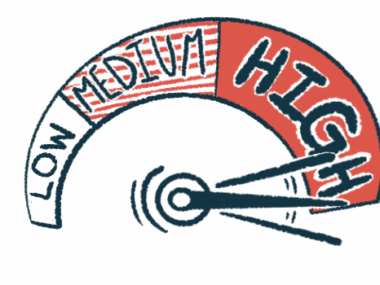Lip biopsy with auxiliary device may diagnose Sjögren’s with fewer complications
In procedure, tissue containing minor salivary glands is removed
Written by |

Lip salivary gland biopsy using an auxiliary device called chalazion forceps may diagnose primary Sjögren’s disease as accurately as the conventional method, but with fewer procedure-related complications, a study suggests.
Researchers noted that, compared with the conventional method, “the modified [lip salivary gland biopsy] … offers a good safety with a small incision, shorter operative time, less bleeding, reduced pain and a low incidence of postoperative complications.” The study, “Surgical advantage of modified labial salivary gland biopsy using chalazion forceps: a prospective randomized controlled study,” was published in Clinical and Experimental Medicine.
Sjögren’s disease is an autoimmune disorder that primarily causes inflammation in the glands that produce tears and saliva, leading to the hallmark symptoms of dry eyes and mouth.
Among the methods to diagnose Sjögren’s, labial salivary gland biopsy is one of the most specific. It involves removing a small amount of tissue containing minor salivary glands from the lower lip to assess the pattern and severity of inflammation.
The procedure holds certain risks, however, including long-term changes in lip sensation, along with a large incision and bleeding that can make healing more difficult.
Comparing two biopsy procedures for Sjögren’s diagnosis
Using certain auxiliary devices might help reduce bleeding and the size of the incision, resulting in better outcomes, leading researchers to analyze data from 125 patients with suspected Sjögren’s who had a modified lip salivary gland biopsy using chalazion forceps at a hospital in China. Chalazion forceps are a type of self-retaining forceps with a solid flattened round plate in one arm and a ring on the other arm that fits in the solid plate. Another 92 patients in the analysis had the conventional procedure.
Most patients in both groups were women (about 90%) with a similar mean age at diagnosis, around 50. The proportion of patients with dry mouth and dry eyes was also identical in the groups.
Those who had the modified procedure had a smaller incision (median, 0.7 vs. 1 mm) and lost a smaller amount of blood (median, 0.04 vs. 0.18 g) than those who had the conventional procedure. They also reported less pain in the 24 hours after the procedure and showed better incision healing seven days later.
The size of the collected salivary glands was similar in the groups, but those who had the conventional procedure had more collected: 81.3% had three or more glands collected compared with 24.2% of those who had the modified procedure.
A positive result in either method led to a similar rate of primary Sjögren’s disease diagnosis, with each approach having an accuracy of more than 85% at diagnosing the disease, analyses showed.
“None of our enrolled patients experienced major complications, which is consistent with the findings of previous studies, indicating that the modified surgical method is a safe technique,” wrote the researchers, who said a larger number of patients will be needed to validate the findings in future studies.






